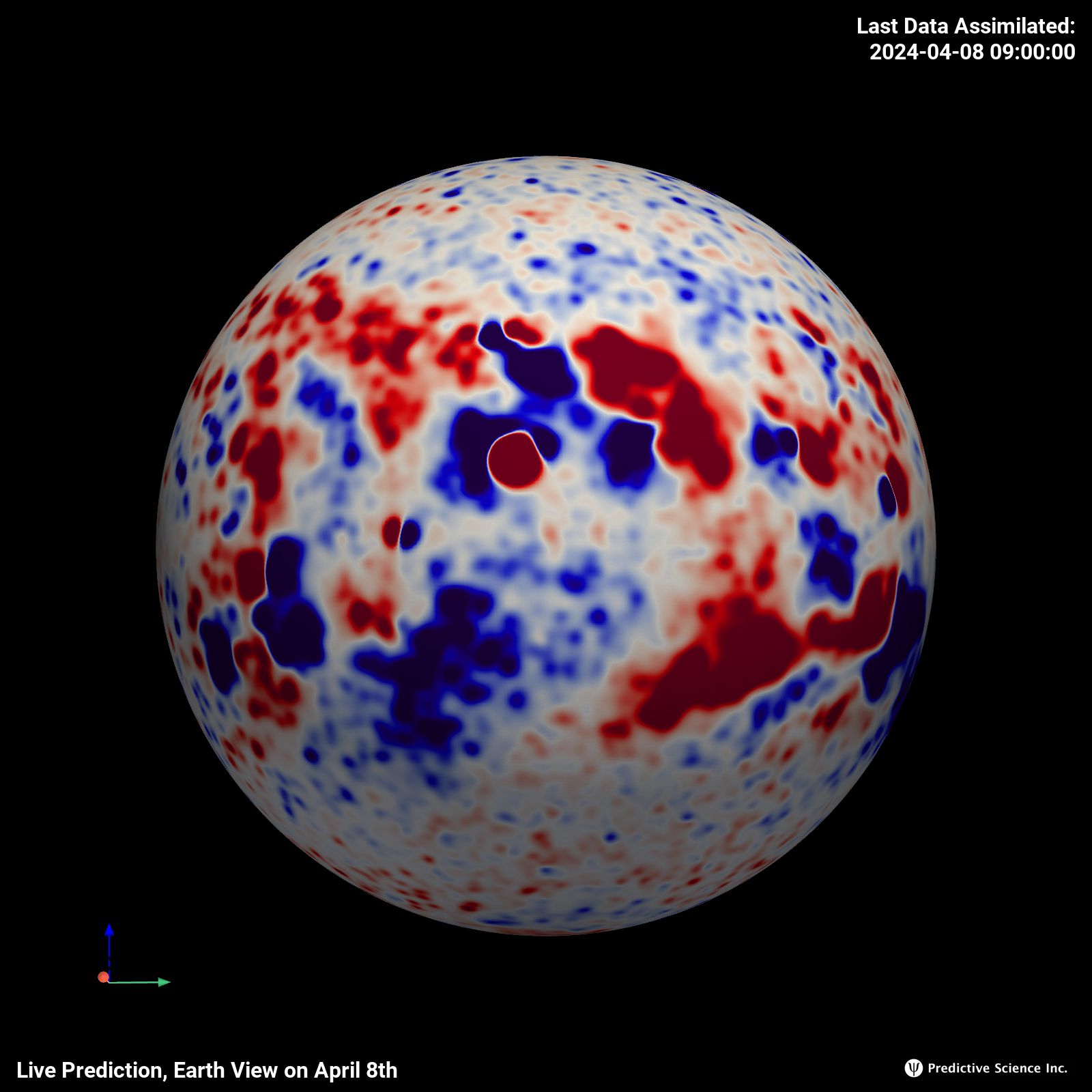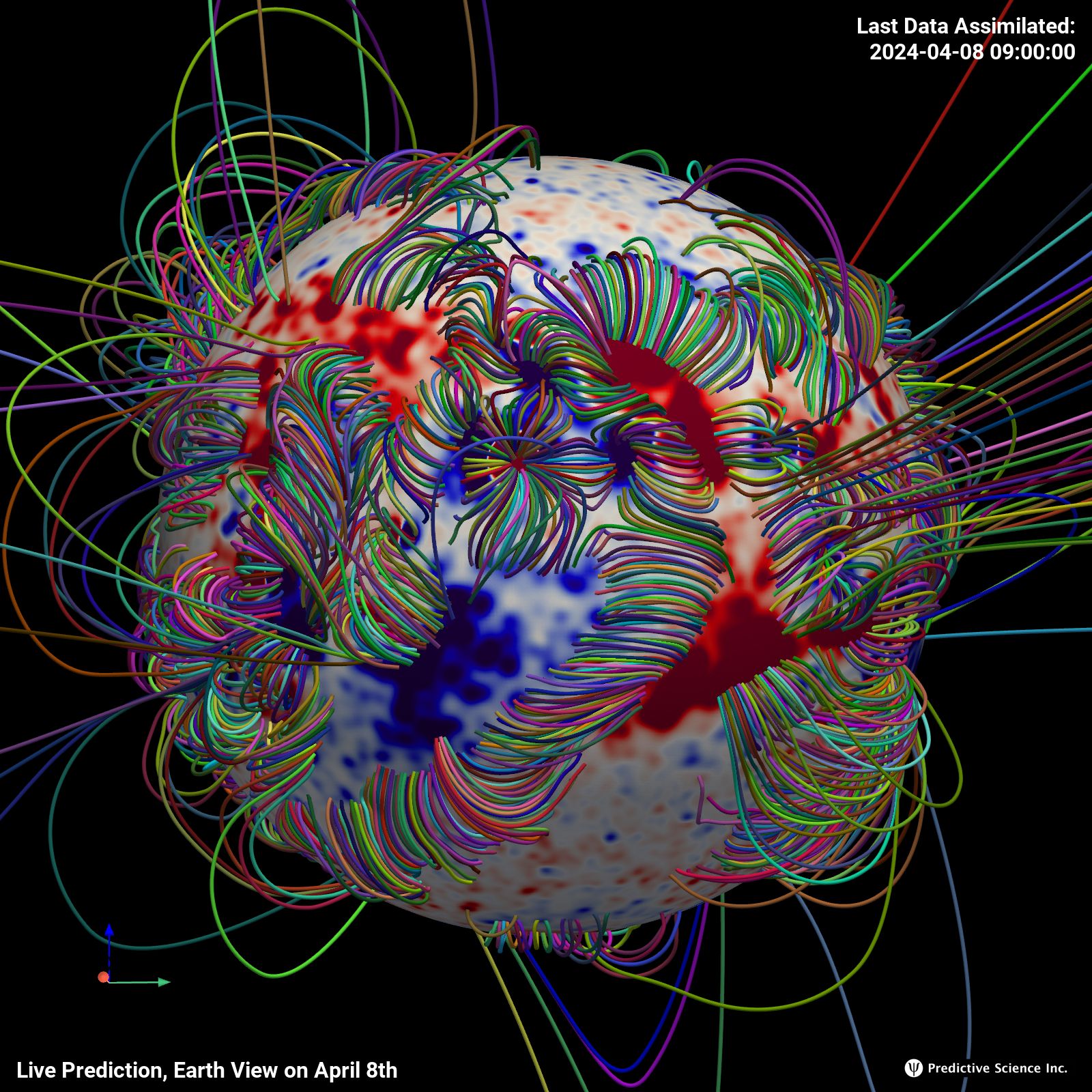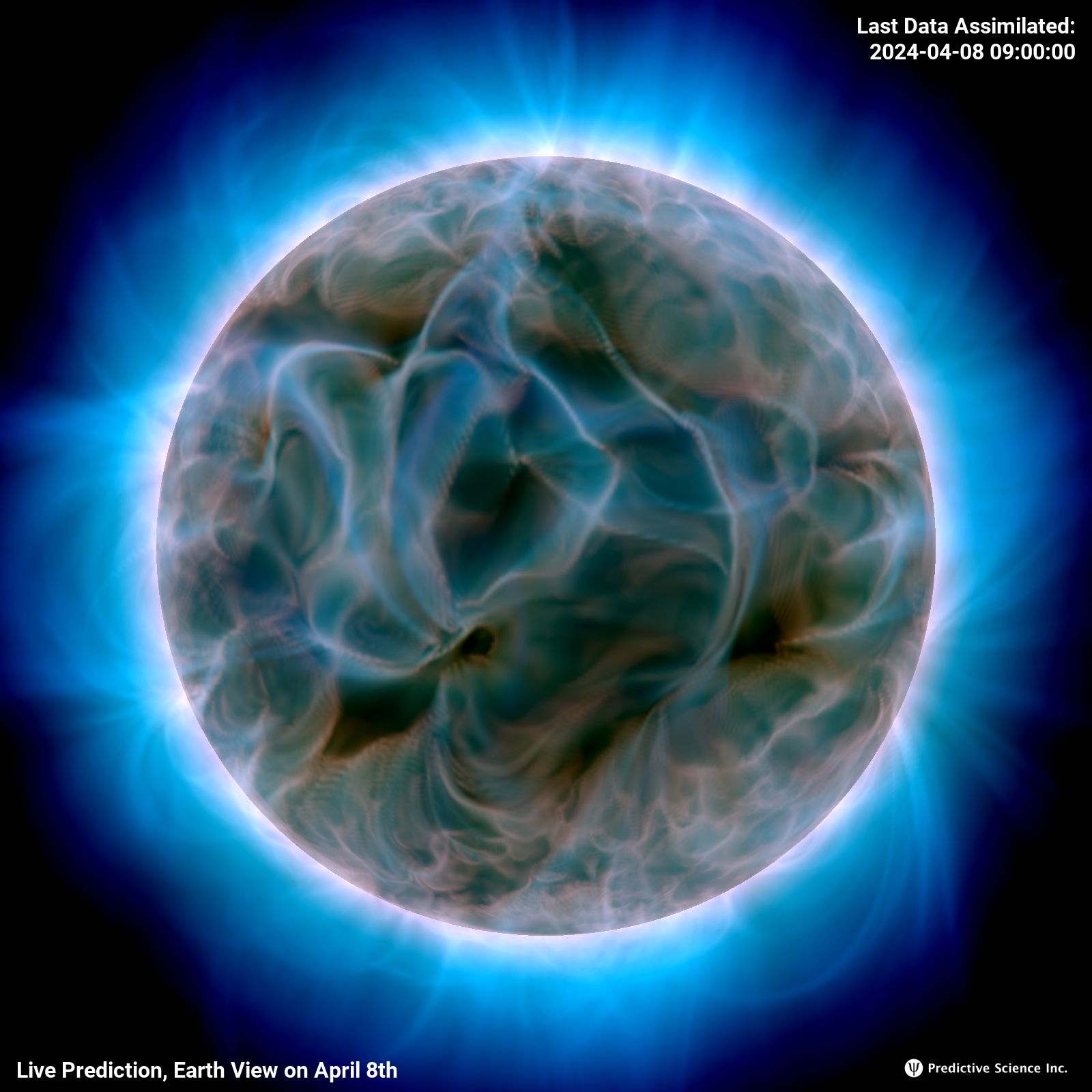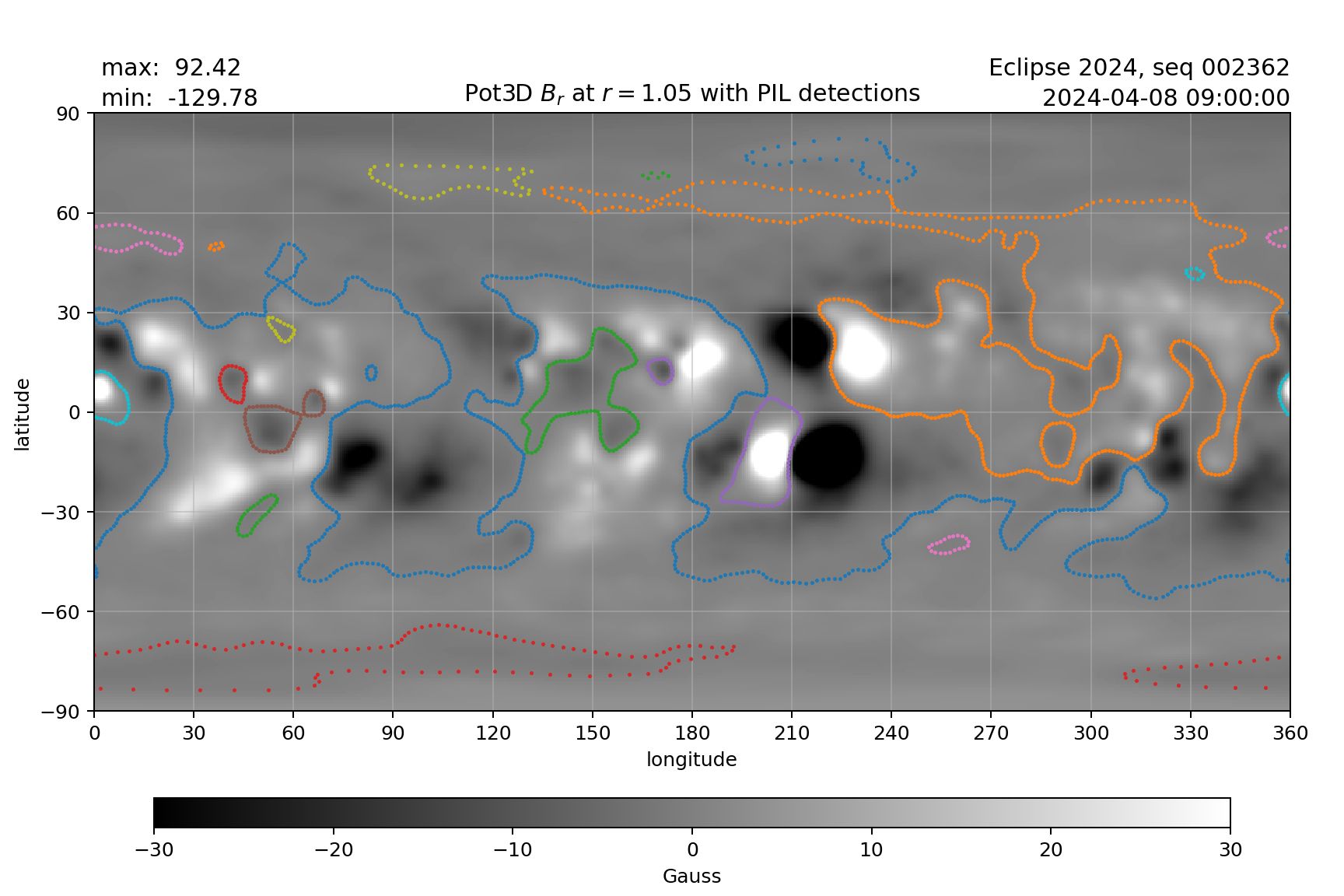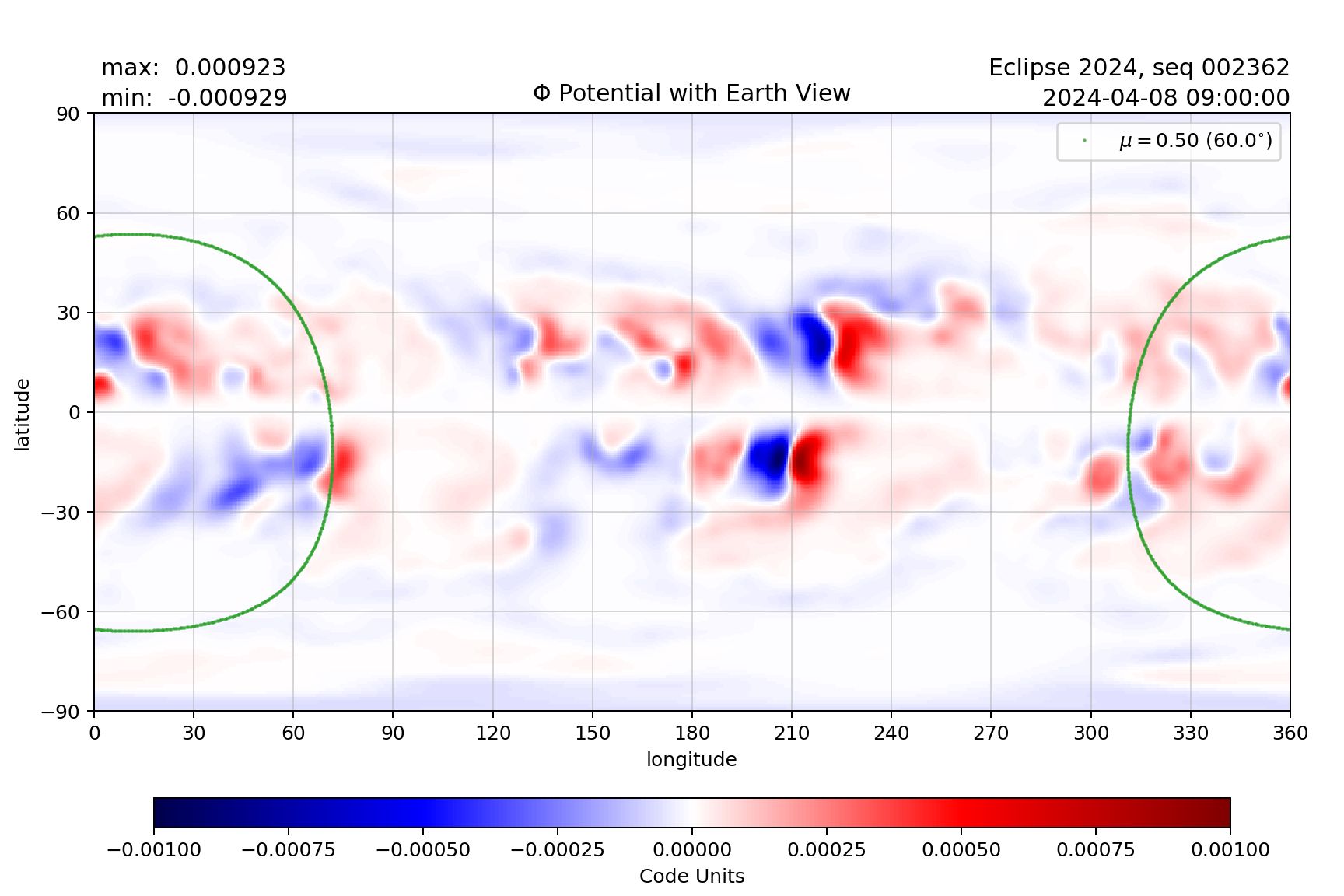Br on the Sphere
(Surface Boundary Condition)
Selected Magnetic Field Lines
(Using Automated Launch Points)
Volume Rendered Squashing Factor
(Emphasizing Low Corona)
Br on the Sphere
(Surface Boundary Condition)
Selected Magnetic Field Lines
(Using Automated Launch Points)
Volume Rendered Squashing Factor
(Emphasizing Low Corona)
Structures in the corona often exhibit features of magnetic non-potentiality - magnetic energy above the potential state (the lowest energy state possible). Magnetic shear/twist is especially evident along magnetic polarity inversion lines (PILs), in the form of prominences (referred to as filaments when seen on the disk), and is also present in active regions. This energization of the magnetic field can structurally change the shape of the overlying streamers and the connectivity of the underlying fields.
Sources of this energization include currents present in active region fields when they emerge from below the photosphere, large-scale photospheric motions (e.g. meridional flow and differential rotation), and smaller scale flows (e.g. supergranular motions). The radial magnetic fields (Br) we assimilate provide no information about the magnetic shear, so we introduce this shear automatically by applying time-dependent electric fields at the boundary. The introduction of this magnetic shear/twist, combined with flux emergence and cancellation in the flux transport model, leads to occasional eruptions and small CMEs in the MHD model. On the real Sun, active regions can emerge with highly energized fields that can lead to major eruptions (X-class flares and wide, fast CMEs). Our procedure will not produce such strongly energized fields, so our model will not predict such events.
We used a similar procedure in previous coronal eclipse predictions and described it in our paper (Mikic et al. 2018) about the 2017 prediction. In those cases, because we were performing a single, static calculation, we could select the PILs we wanted to energize. Here, we had to develop an automatic procedure. We automatically identify PILs in the magnetic field (shown colored by length below on the left). The time-dependent electric fields are controlled by a potential function Φ shown below on the right. This potential is added to the potential described here.
Sources of this energization include currents present in active region fields when they emerge from below the photosphere, large-scale photospheric motions (e.g. meridional flow and differential rotation), and smaller scale flows (e.g. supergranular motions). The radial magnetic fields (Br) we assimilate provide no information about the magnetic shear, so we introduce this shear automatically by applying time-dependent electric fields at the boundary. The introduction of this magnetic shear/twist, combined with flux emergence and cancellation in the flux transport model, leads to occasional eruptions and small CMEs in the MHD model. On the real Sun, active regions can emerge with highly energized fields that can lead to major eruptions (X-class flares and wide, fast CMEs). Our procedure will not produce such strongly energized fields, so our model will not predict such events.
We used a similar procedure in previous coronal eclipse predictions and described it in our paper (Mikic et al. 2018) about the 2017 prediction. In those cases, because we were performing a single, static calculation, we could select the PILs we wanted to energize. Here, we had to develop an automatic procedure. We automatically identify PILs in the magnetic field (shown colored by length below on the left). The time-dependent electric fields are controlled by a potential function Φ shown below on the right. This potential is added to the potential described here.
